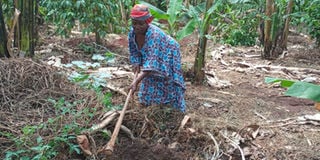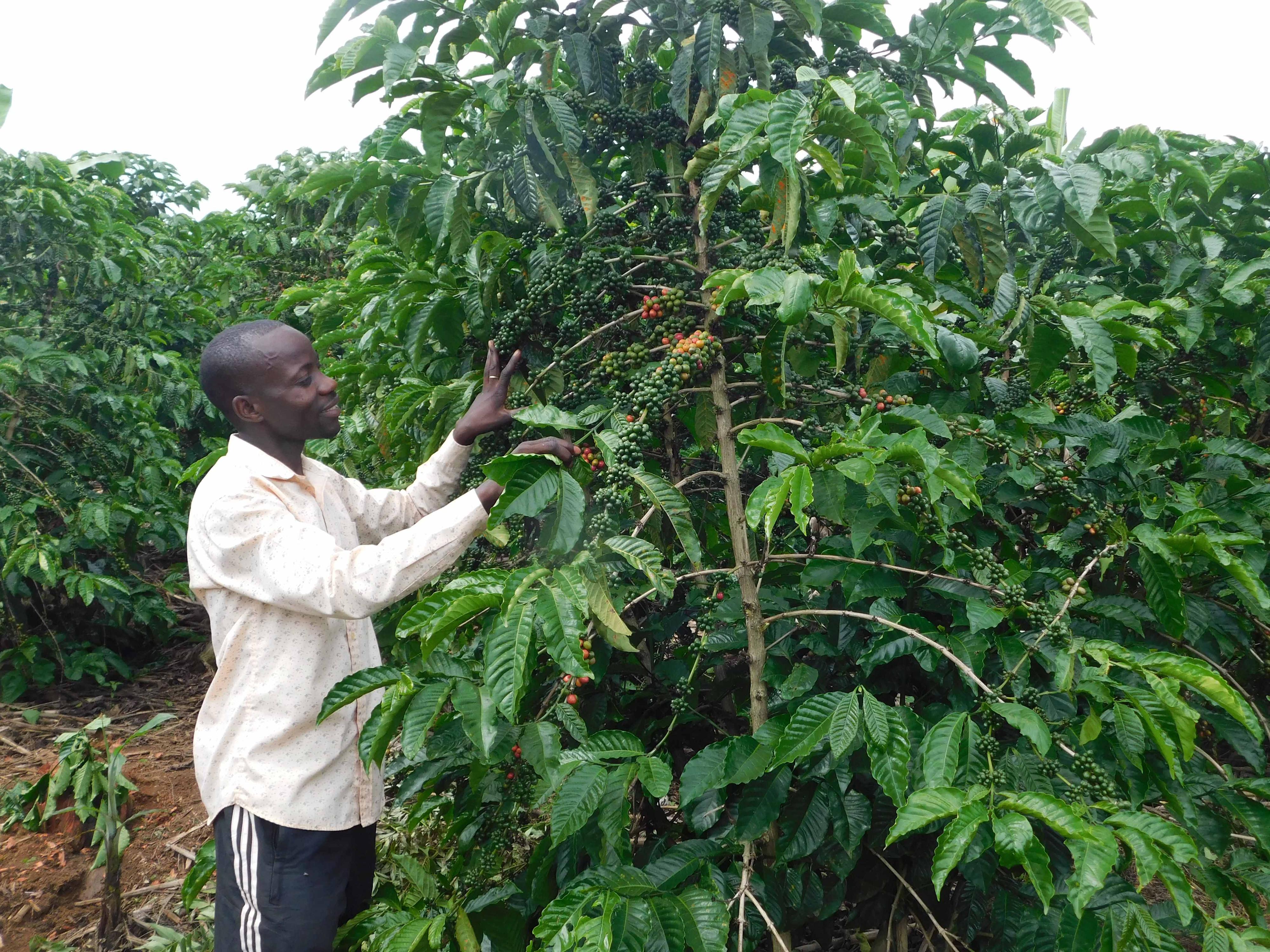Why you must always test your soil

Farmers are advised to test their soil before the planting season starts. PHOTO | LOMINDA AFEDRARU
What you need to know:
- One of the oldest and most accurate methods for assessing soil pH at home is pH testing strips. To use these strips farmers must collect a soil sample and mix it with distilled water; that makes it a more time-intensive method.
In the early stages, Uganda's soils were considered fertile and little was done to improve productivity in a systematic way.
However it was soon realised that crop yields in Uganda declined under continuous cultivation due to soil degradation like anywhere else.
This is the thinking of soil scientists in Uganda where research is conducted to test and determine soil fertility at the National Agricultural Research Laboratories (NaRL). In research paper by Dr Henry Ssali concerning facts about soil research in Uganda, it is stated that initial studies on liming and fertilisers indicated little crop response. Efforts then turned to understanding processes associated with land rests which revealed the importance of both soil chemical and physical properties. The result were recommendations to use a combination of organic materials, crop rotations, grass rests and soil and water conservation practices to improve and sustain soil productivity.
Studies were also conducted to understand the causes of infertile patches in the country like 'lunyu' soils in central Uganda and sterile acid swamps.
Research on fertiliser use was intensified after the Second World War and focused on the annual cropping systems.
Background
Soils are cross cutting and many soils research and development activities are collaborative with various commodity programmes under the National Agricultural Research Organisation (Naro) and other institutions.
Soil productivity management before 1898 involved farmers in different areas have classified soils based on colour, texture and top sequence position and these classifications are used to indicate productivity and suitability for various crops.
This started well over I00 years ago and in many cases indigenous classification is still being used.
Soil productivity management practices were part of traditions in many areas of Uganda and these helped to sustain agricultural production.
There is evidence that trashlines were traditionally used on sloping lands in South West Uganda to improve soil fertility, water retention and crop productivity. Recent studies have confined that trash lines improve soil productivity.
Other practices that have been used include stone lines across a field for soil and water conservation, use of livestock manures and household refuse and shifting cultivation where the overused piece of land was rested to improve soil productivity.
However there are now modern laboratory soil pH tests which are conducted by scientists at the same institute to access soil fertility.
Soil pH testing
In a publication Fine gardening managed by soil scientists from Cornell University US, they outline different ways of testing soil pH as explained below.
It is stated in the publication that most people know that soil pH is a measure of how acidic or alkaline the soil is. Soils naturally have a wide range of PH values, with most ranging from 3.5, which is very acidic, up to 10, which is highly alkaline.
Most garden plants prefer soil that is neutral to slightly acidic with a pH value around 6.5 to 7.
The main reason why most plants flourish in the neutral zone is that the majority of plant nutrients are easily accessible within this range.
Nitrogen for instance is less available below 5.5 and above 8. When soil pH falls outside of those numbers, it is very hard for plant roots to access that essential nutrient.
It is best to grow plants that thrive in the native pH of your area if possible, but if the soil is too acidic or basic for the plants you want to grow, they will not be able to take up nutrients well unless you adjust the soil pH to bring it into their optimal range.
For this reason, it is important to measure and understand the pH of your soil.
For a precise measurement of soil pH, it is best to collect and submit a soil sample to a soil testing laboratory.
This is also a good time to get a full laboratory analysis of farmers soil if an initial assessment has never been done.
Most laboratory professionals recommend testing soil’s PH and nutrient availability every two to five years through a lab even if it has naturally fallen in an ideal range in the past.
Ways of testing soil pH
The following are outlined easy testing methods farmers can employ in testing their soils.
Analog probes
There are many pH testing probes on the market. One benefit of these tools is that they are easy to use.
You simply insert the probe into the soil and wait for some minutes and then read the result.
This saves time because farmers are not expected to collect soil samples, but it is not as accurate as a lab test.
Most analog pH probes measure more than one soil factor and include a moisture meter, among other options.
Testing strips
One of the oldest and most accurate methods for assessing soil pH at home is pH testing strips. To use these strips farmers must collect a soil sample and mix it with distilled water; that makes it a more time-intensive method.
The strips change colors to report the pH, so it is essential that you be able to color-match accurately.
Digital metres
Digital pH metres offer the same information as the analog pH probes, but they may be easier to read as they provide a specific number and one does not have to read the result on a dial.
Some users believe that analog meters are more accurate, but in general a high-quality digital reader should give a strong approximate figure of the soil pH.
Home pantry method
Also known as the vinegar and baking soda method. This pH test can be done with ingredients you likely have in your kitchen pantry.
It requires taking a soil sample and split it into two jars then add enough distilled water to the soil to make a slurry with a milkshake texture.
Add baking soda to one jar and mix then add vinegar to the other and mix. If the baking soda mixture bubbles, you likely have acidic soil but if the vinegar mixture bubbles, you likely have alkaline soil. This method is best used as an initial assessment of your soil pH or as an educational activity.
Test kits
Many companies offer soil testing kits that allow gardeners to take their own sample and then mail it generally in a bag that is included with the test to the company for results, which are ready in a week or two.
It’s best to check reviews online, as these testing companies have various methods, turnaround times and specialties.




